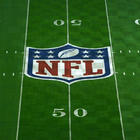The NFL's 32 teams have officially been informed how much money they're going to have spend when free agency begins on March 14.
CBS Sports NFL Insider Jason La Canfora has reported that the salary cap for 2018 has been set at $177.2 million. The new number is $10.2 million more than teams had to spend in 2017 and nearly $22 million more than teams had to spend during the 2016 season, when the salary cap was set at $155.28 million.
The salary-cap number is negotiated by the NFL and NFLPA using a formula that takes into account multiple factors, including revenue from broadcasting rights, premium tickets and merchandising.
With the salary cap now in place, that means the franchise tag numbers are also now available.
Franchise tag numbers for this season:
— Adam Schefter (@AdamSchefter) March 6, 2018
Position … Tag Salary
QB … $23,189,000
RB … $11,866,000
WR …$15,982,000
TE … $9,846,000
OL …$14,077,000
DE … $17,143,000
DT … $13,939,000
LB … $14,961,000
CB … $14,975,000
S … $11,287,000
K/P … $4,939,000
Any team that plans on tagging their quarterback in 2018 will have to pay him $23.189 million in guaranteed money.
With the cap number now officially set, we know for sure that the Browns are going to have some serious money to spend in free agency. With the cap at $177.2 million, Cleveland is expected to have roughly $108 million in cap money available. In a recent piece for CBSSports.com, former NFL agent Joel Correy listed the Browns, Jets, Colts, 49ers, Buccaneers and Texans as the six teams best set up for free agency.
Of the teams that made the playoffs in 2017, the Vikings currently have the most cap space available ($47.6 million), which could put them in a good position to land Kirk Cousins. La Canfora has reported that the Vikings and Jets will likely be the final two bidders for Cousins' services.
As for the cap, the 6.11 percent increase is the smallest since 2013, when it went up just 1.99 percent following the 2012 season.
The salary cap has gone up more than $100 million over the past 15 years.
NFL Salary Cap since 2003
2018: $177.2 million
2017: $167 million
2016: $155.28 million
2015: 143.28 million
2014: $133 million
2013: $123 million
2012: $120.6 million
2011: $120 million
2010: UNCAPPED
2009: $123 million
2008: $116 million
2007: $109 million
2006: $102 million
2005: $85.5 million
2004: $80.58 million
2003: $75 million

















